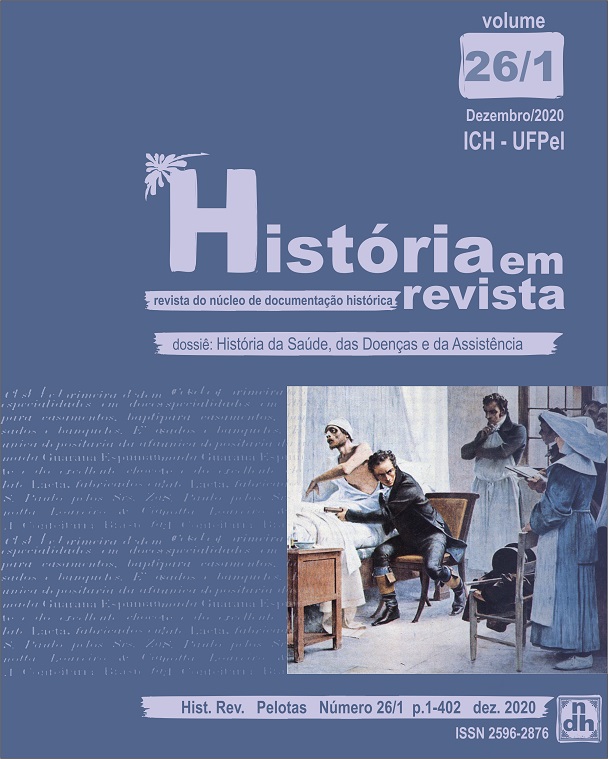SOBRE AS VIRTUDES MEDICINAIS DOS INSETOS NA OBRA PARAGUAY NATURAL ILUSTRADO DE JOSÉ SÁNCHEZ LABRADOR S. J. (1776-1776)
Resumo
Neste artigo, apresentamos a análise de um dos livros que compõem a quarta Parte da obra Paraguay Natural Ilustrado, escrita pelo padre José Sánchez Labrador, entre 1771 e1776, a partir de suas observações da fauna e da flora das regiões que compreendiam a Província Jesuítica do Paraguai, na qual atuou como missionário. Neste livro, o jesuíta descreve as virtudes terapêuticas e os modos de preparo de vinte e um insetos, dentre os quais destacamos os escorpiões, as aranhas, as cantáridas, os grilos e os piolhos. Para além das aplicações de pressupostos da teoria hipocrático-galênica, Sánchez Labrador estabelece comparações entre as práticas curativas indígenas e as europeias, realizando, ainda, interessante diálogo com obras clássicas e setecentistas de História Natural, Medicina e Farmácia.
______________________________________________
Abstract: In this article, we present the analysis of one of the books that the fourth Part of the work Paraguay Natural Ilustrado is composed of, written by priest José Sánchez Labrador, between 1771 and 1776, drawing from his observations of the fauna and flora of the regions that comprised the Província Jesuítica of Paraguai, in which he acted as a missionary. In this book, Labrador describes the therapeutic virtues and the preparation methods of twenty one insects, among which we highlight scorpions, spiders, Spanish flies, crickets and lice. Beyond the applications of principles of the hipocratic-galenic theory, Sánchez Labrador establishes comparisons between the indigenous and the European healing practices, accomplishing, still, an interesting dialog with classic works of Natural History, Medicine, and Pharmacy from the 1700's.
Autores que publicam nesta revista concordam com os seguintes termos:
1. Autores mantém os direitos autorais e concedem à revista o direito de primeira publicação, com o trabalho simultaneamente licenciado sob a Licença Creative Commons Attribution que permite o compartilhamento do trabalho com reconhecimento da autoria e publicação inicial nesta revista.
2. Autores têm autorização para assumir contratos adicionais separadamente, para distribuição não-exclusiva da versão do trabalho publicada nesta revista (ex.: publicar em repositório institucional ou como capítulo de livro), com reconhecimento de autoria e publicação inicial nesta revista.
3. Autores têm permissão e são estimulados a publicar e distribuir seu trabalho online (ex.: em repositórios institucionais ou na sua página pessoal) a qualquer ponto antes ou durante o processo editorial, já que isso pode gerar alterações produtivas, bem como aumentar o impacto e a citação do trabalho publicado.










